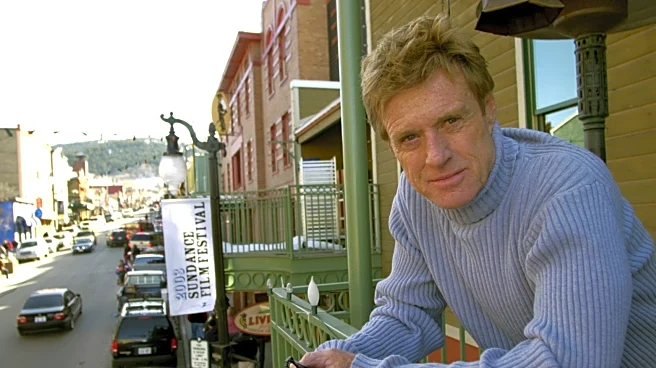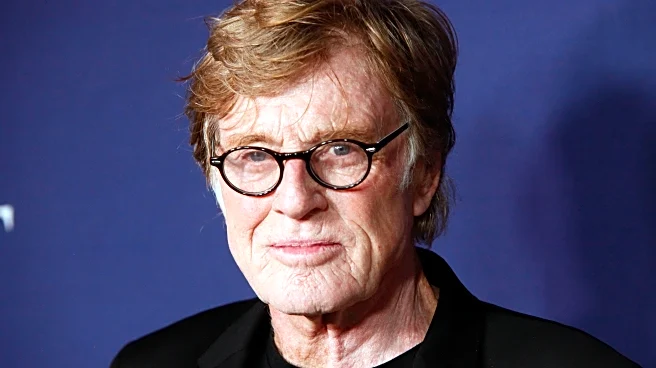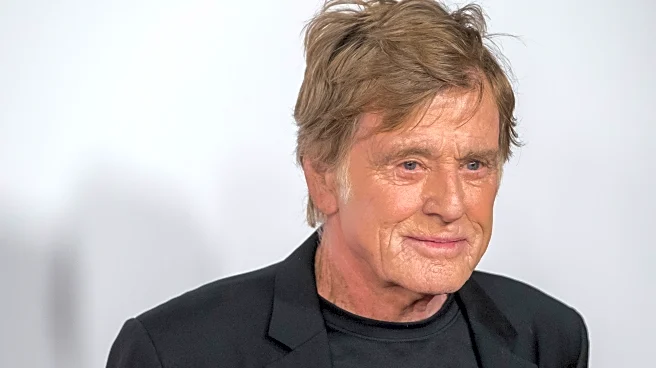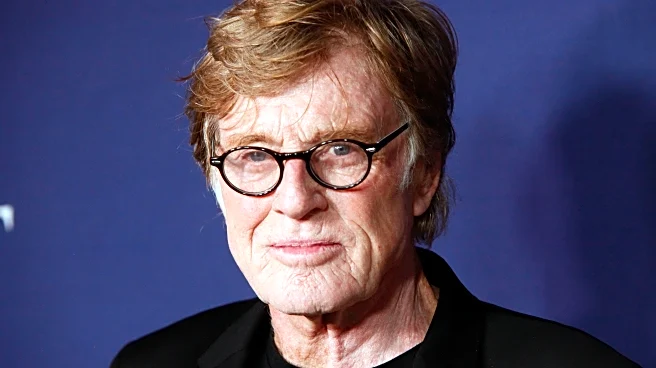What's Happening?
Robert Redford, the acclaimed actor, director, and founder of the Sundance Institute, has died at the age of 89. Redford passed away in his sleep at his home in Sundance, Utah, surrounded by loved ones. Known for his roles in films such as 'Butch Cassidy and the Sundance Kid' and 'All the President’s Men,' Redford was a significant figure in American cinema. Before his Hollywood career, Redford aspired to be a painter, studying at the University of Colorado and later at the Académie Julian in Paris. His artistic background influenced his acting and directing style, characterized by a keen eye for composition and light. Redford founded the Sundance Institute in 1981 to support independent filmmakers, expanding it to include cross-disciplinary art programs.
Why It's Important?
Redford's death marks the end of an era for Hollywood and the independent film community. As a cultural icon, he not only shaped the film industry with his performances but also transformed it through his advocacy for independent cinema. The Sundance Institute and its film festival have been pivotal in launching the careers of numerous filmmakers, providing a platform for diverse voices outside the mainstream studio system. Redford's commitment to environmental causes and Native American communities further underscores his impact beyond the screen. His legacy is one of artistic innovation and social activism, influencing both the film industry and broader cultural conversations.
What's Next?
The film industry and fans worldwide are likely to honor Redford's legacy through tributes and retrospectives of his work. The Sundance Institute may organize special events to commemorate its founder, highlighting his contributions to independent cinema. Additionally, discussions about Redford's influence on environmental and cultural issues may gain renewed attention, inspiring future generations to continue his advocacy. The impact of his work will likely be felt in ongoing and future projects that align with his vision for art and activism.
Beyond the Headlines
Redford's life and career reflect a deep intersection of art and activism. His dedication to supporting Native American artists and environmental causes highlights a broader cultural and ethical commitment. As an artist who never abandoned his painter's sensibility, Redford's approach to filmmaking was holistic, integrating visual art traditions into cinematic storytelling. This multidisciplinary perspective may inspire future filmmakers to explore similar cross-genre collaborations, potentially leading to innovative artistic expressions.











